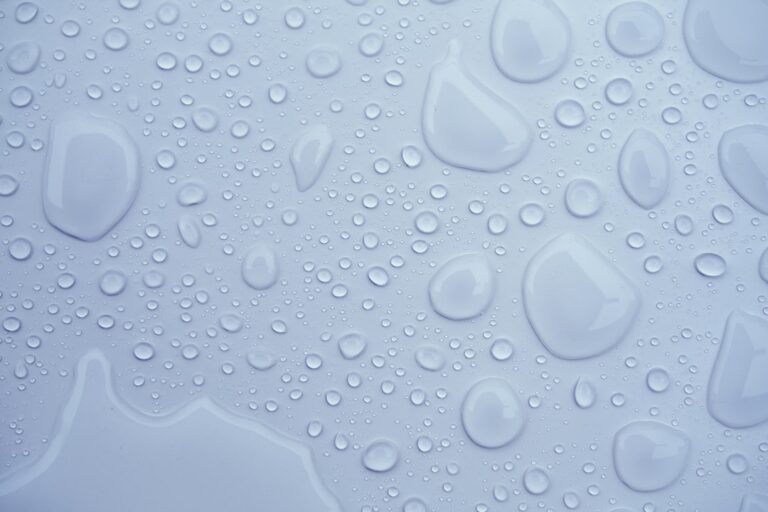Low water pressure can be a frustrating issue for homeowners, often leading to unsatisfactory shower experiences and inefficient household tasks. The causes of low water pressure can vary widely, ranging from simple clogs to more complex plumbing issues. One common culprit is the accumulation of mineral deposits within pipes, which can restrict water flow over time.
Additionally, leaks in the plumbing system can lead to a significant drop in pressure, as water escapes before it reaches the intended fixtures. Understanding these potential causes is crucial for diagnosing and addressing the problem effectively. Another factor that can contribute to low water pressure is the overall design of the plumbing system.
Older homes may have outdated piping that is not equipped to handle modern water demands, leading to inadequate pressure. Furthermore, municipal water supply issues can also play a role; if the local water supply is experiencing problems, residents may notice a decrease in pressure. By identifying these various causes, homeowners can take the first steps toward restoring their water pressure to optimal levels.
Key Takeaways
- Low water pressure can be caused by clogs in the showerhead, issues with the water supply line, pressure regulator, shower valve, hot water heater, plumbing design, and hard water buildup.
- Checking for clogs in the showerhead is a simple and common cause of low water pressure that can be easily fixed by cleaning or replacing the showerhead.
- Inspecting the water supply line for leaks, blockages, or damage can help identify and resolve issues affecting water pressure.
- Testing the pressure regulator can help determine if it is functioning properly and adjust it to improve water pressure if necessary.
- Evaluating the shower valve for any malfunctions or blockages can help identify and address issues affecting water pressure.
Checking for Clogs in the Showerhead
Inspect the Showerhead
One of the first places to look is the showerhead itself. Over time, mineral deposits and sediment can build up within the showerhead, leading to reduced water flow. Homeowners can begin by removing the showerhead and inspecting it for any visible blockages.
Cleaning the Showerhead
A simple cleaning solution, such as vinegar, can be used to dissolve mineral buildup, allowing for improved water flow once reattached.
Check the Aerator
In addition to cleaning the showerhead, it is also advisable to check the aerator, if present. Aerators are designed to mix air with water, creating a more efficient flow. However, they can also become clogged with debris over time. By disassembling and cleaning both the showerhead and aerator, homeowners can often restore their shower’s water pressure without needing to call in a professional.
Inspecting the Water Supply Line
If cleaning the showerhead does not resolve the low water pressure issue, the next step involves inspecting the water supply line. This line is responsible for delivering water from the main supply to various fixtures throughout the home. Homeowners should check for any visible signs of leaks or damage along the supply line, as even small leaks can significantly impact water pressure.
Additionally, kinks or bends in the line can restrict flow and should be addressed promptly. It is also important to consider whether the main shut-off valve is fully open. Sometimes, homeowners inadvertently adjust this valve during maintenance or repairs, leading to reduced water flow.
Ensuring that the valve is completely open can often resolve low pressure issues. If problems persist after checking these elements, it may be necessary to consult with a plumbing professional to assess the integrity of the entire supply line.
Testing the Pressure Regulator
| Pressure Regulator Testing Metrics | Results |
|---|---|
| Pressure Setting | 50 psi |
| Leakage Test | No leakage observed at 60 psi |
| Flow Rate | 100 liters per minute |
| Response Time | 10 milliseconds |
Another critical component that can affect water pressure is the pressure regulator. This device is designed to maintain consistent water pressure throughout a home’s plumbing system. If the regulator malfunctions or becomes clogged, it can lead to significant fluctuations in water pressure.
Homeowners can test the pressure regulator by using a pressure gauge attached to an outdoor spigot or a faucet. This will provide a clear reading of the current water pressure levels. If the readings indicate that the pressure is lower than normal, it may be time to adjust or replace the regulator.
Many regulators have an adjustment screw that allows homeowners to increase or decrease pressure as needed. However, if adjustments do not yield satisfactory results, seeking professional assistance may be necessary to ensure proper installation and functionality of a new regulator.
Evaluating the Shower Valve
The shower valve plays a crucial role in controlling water flow and temperature within the shower system. If this valve becomes faulty or worn out, it can lead to low water pressure issues. Homeowners should begin by inspecting the valve for any signs of wear or damage, such as leaks or corrosion.
If any issues are detected, replacing the valve may be necessary to restore proper function. In some cases, sediment buildup within the valve can also impede water flow. Disassembling the valve for cleaning may help alleviate this problem.
Homeowners should take care to follow manufacturer instructions when reassembling components to ensure everything is put back together correctly. By addressing potential issues with the shower valve, homeowners can often improve their overall shower experience.
Addressing Issues with the Hot Water Heater
Hot Water Heater Issues
One common issue that can affect hot water delivery is sediment buildup within the hot water heater itself. Over time, sediment can accumulate and restrict the flow of water, leading to reduced pressure in hot water lines. To prevent this, homeowners should consider flushing their hot water heater periodically to remove any accumulated sediment and improve efficiency.
Leaks Around the Hot Water Heater
Another crucial aspect to check is for leaks around the hot water heater. A leaking heater can cause significant drops in pressure and may require immediate attention to prevent further damage. Homeowners should inspect the heater and its connections regularly to identify any signs of leakage.
When to Consult a Professional
If problems persist after flushing and inspecting for leaks, it may be time to consult with a professional plumber. They can assess the situation and determine whether repairs or replacement of the hot water heater is necessary to restore optimal water pressure and flow.
Considering the Impact of Plumbing Design
The design of a home’s plumbing system can significantly influence water pressure levels throughout various fixtures. Homes with long runs of pipe or multiple bends may experience more resistance and lower pressure than those with simpler designs. Homeowners should evaluate their plumbing layout and consider whether modifications could improve overall efficiency.
In some cases, upgrading certain sections of piping to larger diameters may help alleviate pressure issues by allowing more water to flow through at once. Additionally, ensuring that all fixtures are properly vented can help maintain consistent pressure levels throughout the system. By understanding how plumbing design impacts water flow, homeowners can make informed decisions about potential upgrades or modifications.
Exploring Solutions for Hard Water Buildup
Hard water is another common issue that can lead to low water pressure due to mineral buildup within pipes and fixtures. Homeowners experiencing hard water problems may notice not only reduced pressure but also unsightly stains on faucets and fixtures. Installing a water softener can be an effective solution for addressing hard water issues and preventing future buildup.
Regular maintenance of plumbing fixtures is also essential in combating hard water effects. Homeowners should consider using descaling agents periodically to remove mineral deposits from faucets and showerheads. By taking proactive measures against hard water buildup, homeowners can help maintain optimal water pressure and prolong the lifespan of their plumbing systems.
Upgrading to a High-Pressure Showerhead
For those looking for an immediate solution to low shower pressure, upgrading to a high-pressure showerhead may be an effective option. These specialized showerheads are designed to enhance water flow while maintaining a satisfying shower experience. Many models utilize innovative technology that increases velocity without requiring additional water usage.
When selecting a high-pressure showerhead, homeowners should consider factors such as spray patterns and ease of installation. Many high-pressure models are designed for easy DIY installation, allowing homeowners to enjoy improved performance without needing professional assistance. By making this simple upgrade, individuals can often transform their daily showers into invigorating experiences.
Consulting with a Professional Plumber
While many low water pressure issues can be addressed through DIY methods, there are times when consulting with a professional plumber becomes necessary. Experienced plumbers possess specialized knowledge and tools that allow them to diagnose complex plumbing problems accurately. They can identify underlying issues that may not be immediately apparent to homeowners and recommend appropriate solutions.
Additionally, professional plumbers can provide valuable insights into maintaining optimal water pressure over time. They may suggest routine maintenance practices or upgrades that could enhance overall plumbing performance. By enlisting professional help when needed, homeowners can ensure that their plumbing systems remain in top condition.
Maintaining Optimal Water Pressure
Once low water pressure issues have been resolved, maintaining optimal levels becomes essential for long-term satisfaction with household plumbing systems. Regular inspections of plumbing fixtures and lines can help identify potential problems before they escalate into more significant issues. Homeowners should also consider implementing routine maintenance practices such as flushing hot water heaters and cleaning aerators and showerheads.
Furthermore, being mindful of changes in municipal water supply conditions can help homeowners anticipate fluctuations in pressure levels. Staying informed about local infrastructure developments or potential service interruptions allows individuals to take proactive measures when necessary. By prioritizing maintenance and staying vigilant about plumbing health, homeowners can enjoy consistent and reliable water pressure for years to come.
FAQs
What are the common causes of low water pressure in a shower?
Some common causes of low water pressure in a shower include clogged showerheads, mineral buildup in pipes, water leaks, and issues with the water supply system.
How can I troubleshoot low water pressure in my shower?
You can troubleshoot low water pressure in your shower by checking for clogged showerheads, inspecting for leaks in the pipes, and ensuring that the water supply valve is fully open. You may also want to check if the water pressure is low throughout the entire house or just in the shower.
What can I do to improve the water pressure in my shower?
To improve water pressure in your shower, you can clean or replace the showerhead, remove mineral buildup from the pipes, fix any leaks, and consider installing a water pressure booster or regulator.
When should I seek professional help for low water pressure in my shower?
You should seek professional help for low water pressure in your shower if you are unable to identify or fix the underlying cause, if the low water pressure is affecting the entire house, or if you suspect there may be issues with the water supply system.






